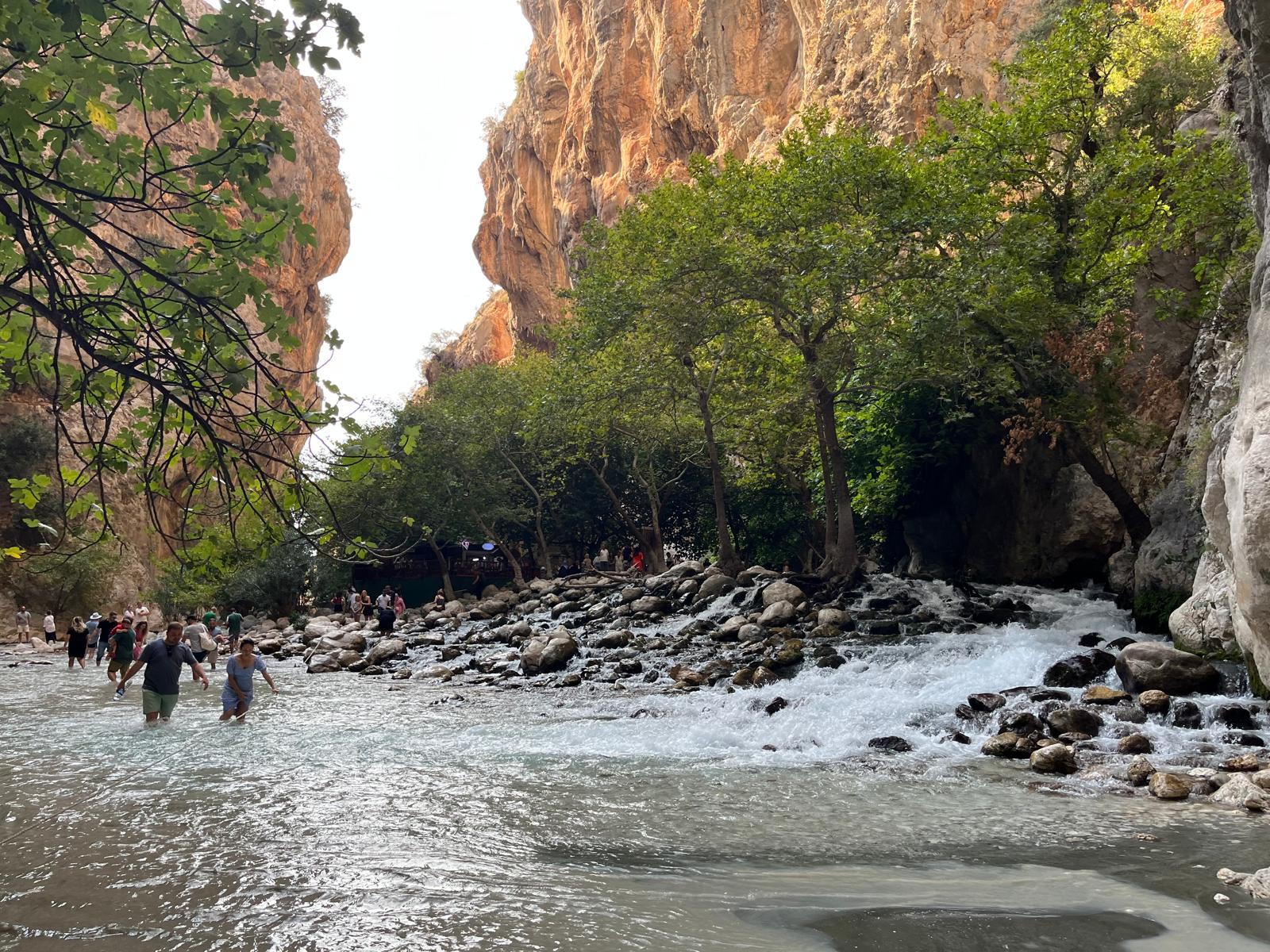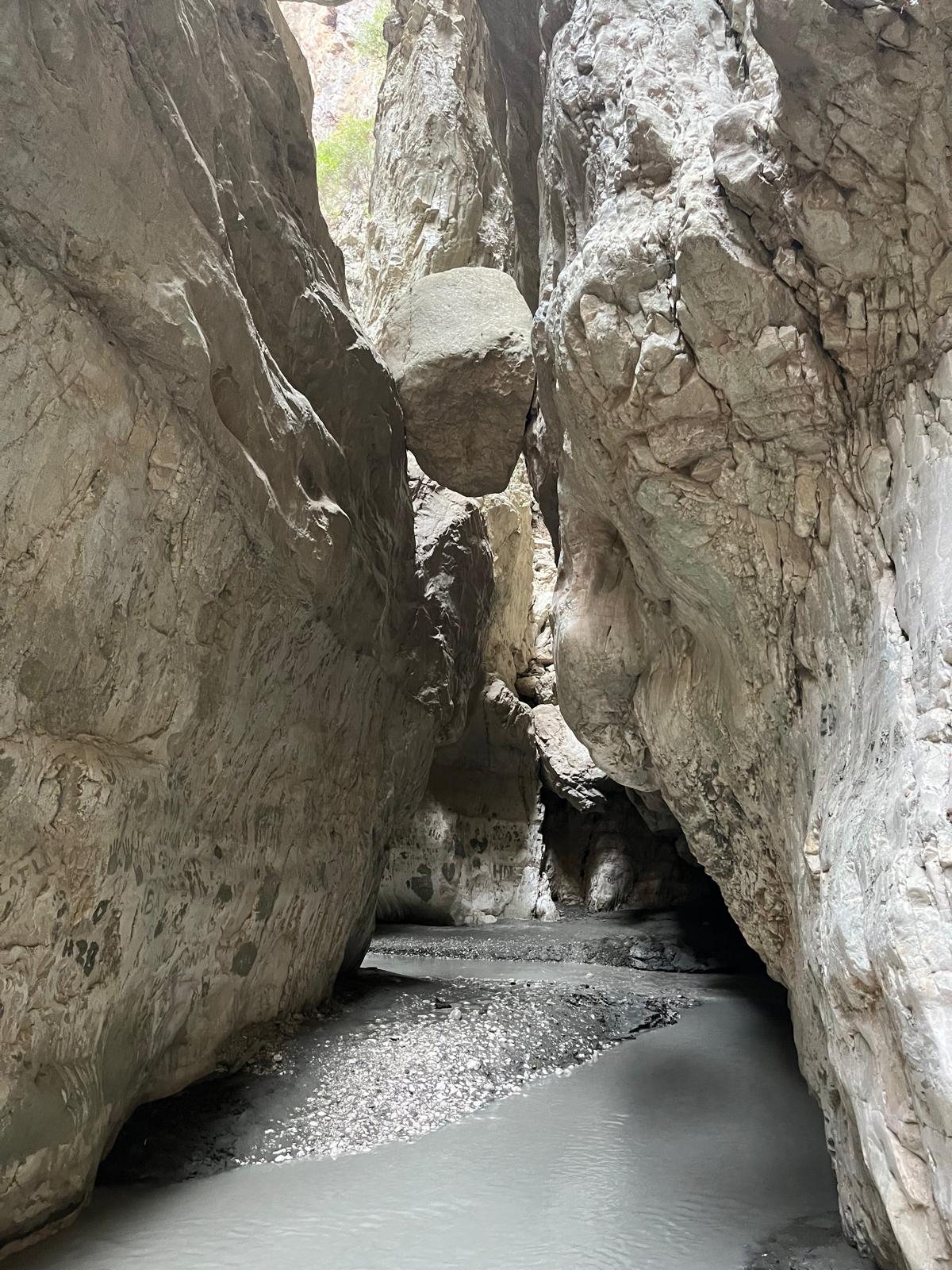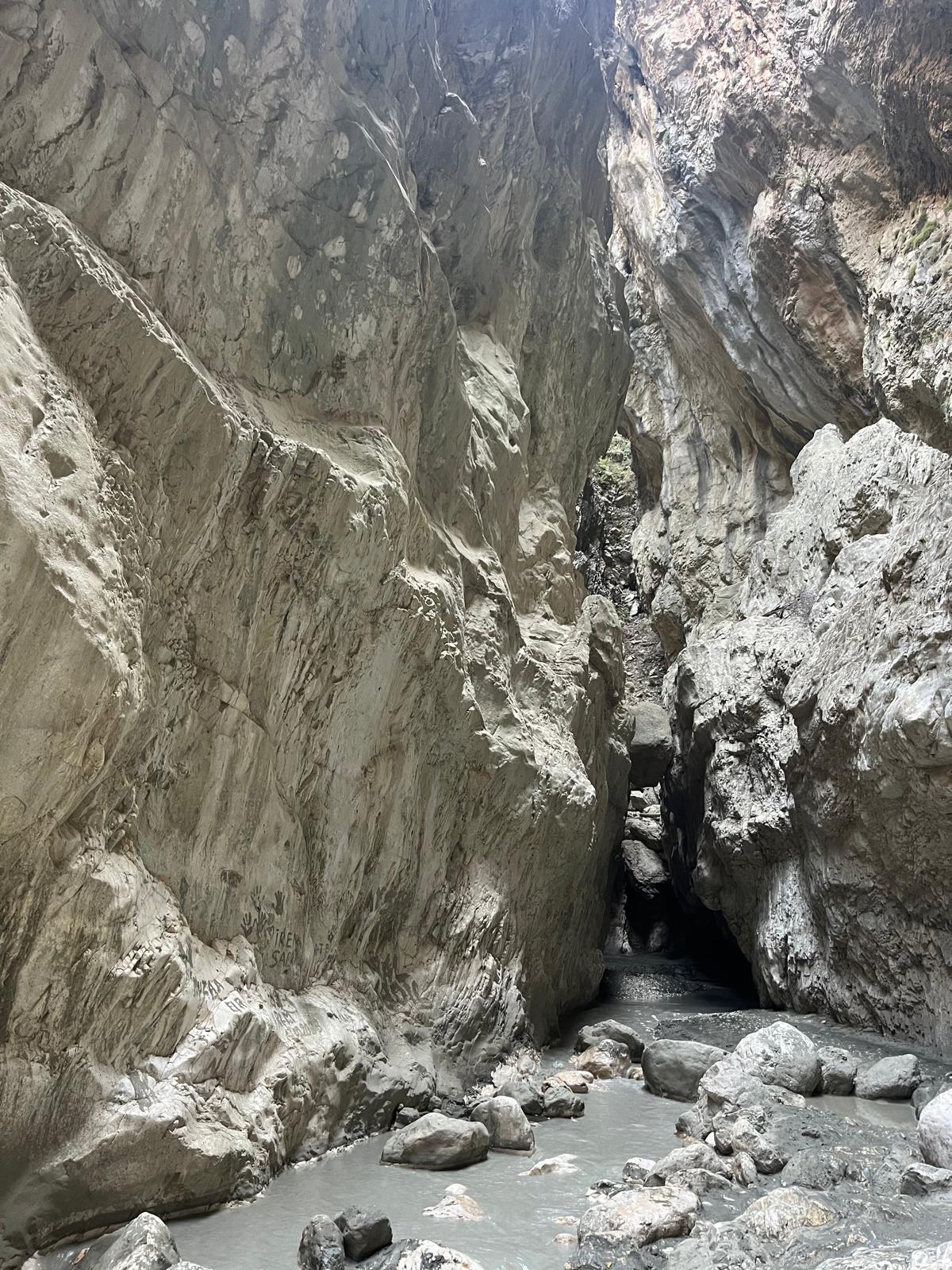Saklıkent National Park is a protected area located in the southwestern part of Turkey, within the boundaries of the Mediterranean Region. Declared a national park in 1996, it lies within the districts of Seydikemer in Muğla Province and Kaş in Antalya Province. One of the park’s most striking geological formations is the Saklıkent Canyon, which stretches for 18 kilometers and reaches depths of up to 300 meters in certain sections. This geomorphological structure was formed over thousands of years by the erosion of limestone by the Karaçay stream, a tributary of the Eşen River.

Saklıkent Canyon (Photograph: Sümeyye Akkanat Terzioğlu.)
History
The systematic discovery of Saklıkent Canyon is relatively recent. In 1988, a local shepherd named Ekrem Uçar from the village of Kayadibi came across this deep and previously unknown gorge while searching for a lost goat in the mountainous terrain. Upon reaching the mouth of the canyon, he informed local authorities about the area's unique natural characteristics—its flowing stream, cool climate, and towering rock walls.
Following this report, local administrators and officials from the Ministry of Forestry conducted field studies in the area and recognized its potential for tourism and nature conservation. As a result, walking paths and passage platforms were constructed, and by 1989 the canyon was partially opened to visitors.
During the 1990s, a documentary produced by the Turkish Radio and Television Corporation (TRT) brought nationwide attention to Saklıkent Canyon. Due to increasing public interest, the area was officially declared a national park on June 6, 1996, by a decision published in the Official Gazette. With this designation, Saklıkent was placed under protection for its distinctive geological and biological features.

Saklıkent Canyon (Photograph: Sümeyye Akkanat Terzioğlu.)
Geographical Features
The total area of the national park is 1,643 hectares, of which 1,556 hectares lie within the province of Antalya and 87 hectares within the province of Muğla. The canyon extends from the Taurus Mountains to the border between the districts of Seydikemer and Kaş. Along the canyon, some rock faces reach heights of approximately 400 to 500 meters. There is an elevation difference of up to 700 meters between the interior sections and the entrance, which significantly increases the difficulty level of hiking within the canyon.

Saklıkent Canyon (Photograph: Sümeyye Akkanat Terzioğlu.)
Climate and Biodiversity
The park area exhibits the characteristics of a typical Mediterranean climate—hot and dry summers, mild and wet winters. However, the narrow canyon floor surrounded by high rock walls creates a unique microclimate. In summer, the canyon interior is noticeably cooler than its surroundings, with water temperatures ranging between 5°C and 10°C. This cool environment makes the park particularly attractive during the hotter months and contributes to heavy seasonal visitor traffic.
Saklıkent National Park holds significant value in terms of both floral and faunal diversity. In the lower elevations, Mediterranean maquis vegetation dominates, with species such as olive, bay laurel, and kermes oak. At higher elevations, forests of red pine, black pine, and cedar are found. The area around Mount Dumanlı, located within the park boundaries, is especially notable for its monumental cedar forests. In the vicinity of Aklar Plateau, endemic bulbous plants—particularly Cyclamen species—can be observed.
From a faunal perspective, 17 mammal species have been identified within the park. Notable species include the wild goat (Capra aegagrus), Eurasian otter (Lutra lutra), wild boar, and red fox. The park also hosts a variety of birds of prey (e.g., golden eagle, common buzzard) as well as rare amphibians and reptiles, such as the endemic Fethiye salamander (Lyciasalamandra fazilae).
Tourism Activities
From the entrance of the canyon, visitors can access a walking platform that leads to the starting point of the canyoning route. It is not possible to traverse the entire canyon on foot without specialized equipment—such as helmets and proper footwear—due to its technical difficulty. Walks in the interior sections of the canyon are conducted only under the guidance of professional guides.
Conservation and Management
The park is managed by the General Directorate of Nature Conservation and National Parks under the Ministry of Agriculture and Forestry. Coordinated efforts are also carried out with the Seydikemer Municipality. To reduce visitor pressure, seasonal limitations, safety precautions, and public information initiatives are in place. In 2019, the park was designated as a “strictly protected sensitive area,” a status granted through scientific evaluations led by the Ministry of Environment and Urbanization and formalized by presidential decree in the Official Gazette.
Environmental Context
In the vicinity of the national park lie important archaeological sites such as Letoon and Tlos, as well as natural attractions like the Eşen River and the Girdev Plateau. Canoeing tours on the Eşen River offer visitors alternative nature-based activities.


